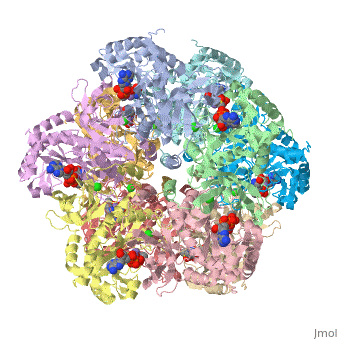User:Uzoma Anele
From Proteopedia
Uzoma Anele, Sandeep Pulugurtha Undergraduate students at the University of Maryland, Baltimore County.
Contents |
Exercise 1
|
Exercise 2
Exercise 3
Exercise 4
Outline
Helical thongs provide a significant amount of intersubunit stabilization to the quaternary structure of glutamine synthetase by binding together subunits from the two layers. There exist 12 helical thongs in glutamine synthetase, each extending from each subunit. A typical , shown here in red, is composed of a nonpolar carboxyl terminus (in this case of subunit A) that inserts into a created by two adjoining subunits (in this case subunits G and L) on the opposite, corresponding layer. An example of the helical thong complex details the C-terminal helix in red and the hydrophobic pocket in blue. Thirty-seven of the 77 residues of which the helical thong and hydrophobic pocket consist, are apolar and involved in the direct contact between the helical thong and pocket. These residues contain an atypical abundance of proline and valine, 16% and 10%, respectively. This unusual amount may serve to enhance its rigidity and cohesion. [1][2]
|

